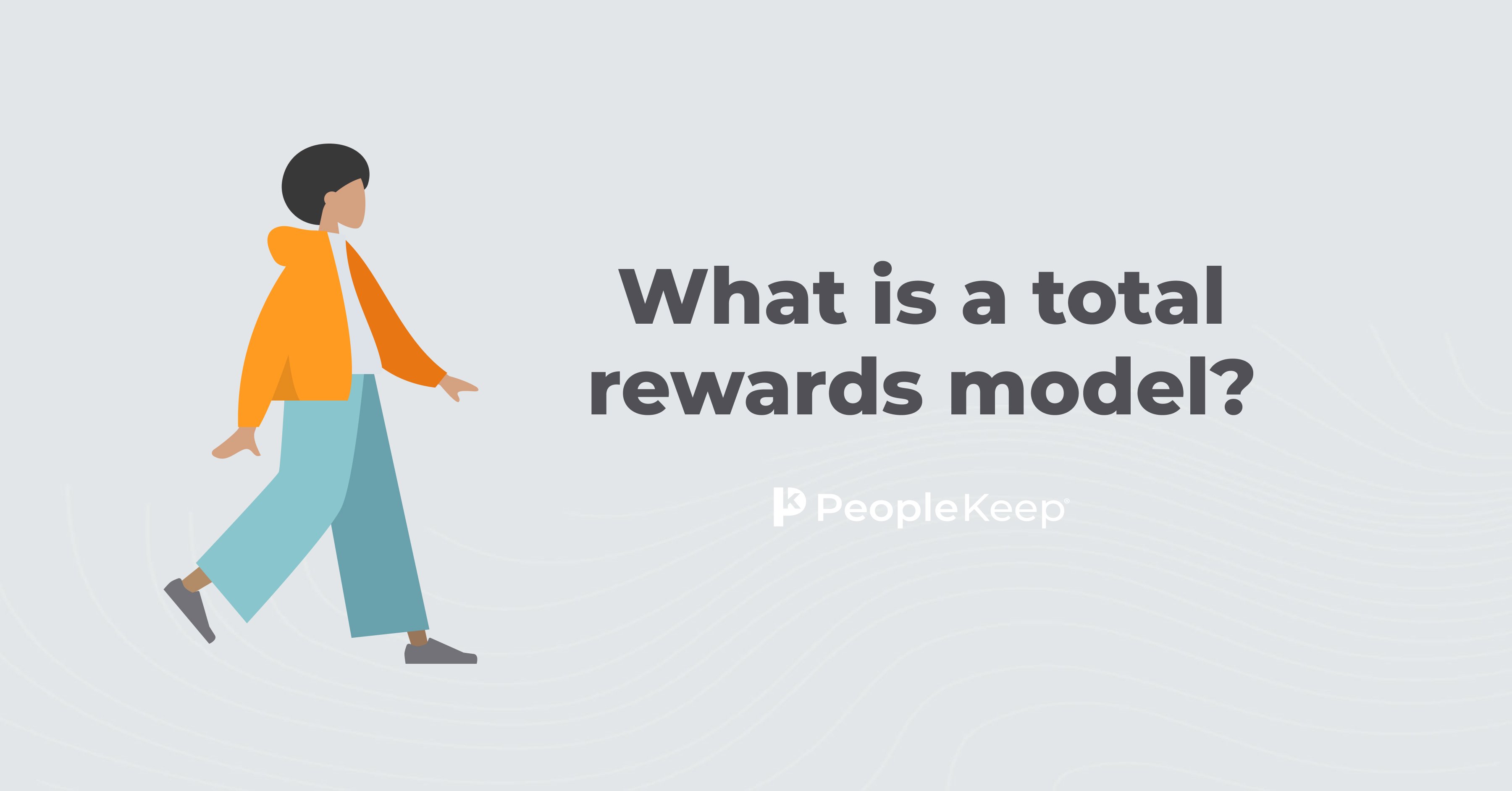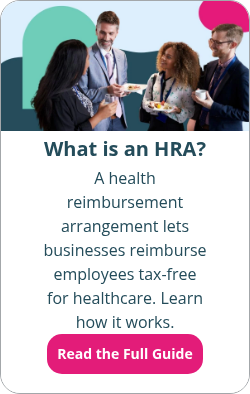Designing an effective perks program: Key considerations and best practices
By Elizabeth Walker on September 27, 2023 at 11:09 AM
Today’s labor market is tougher than ever. There are two job openings1 for every one unemployed individual—the highest reported in history—so employers must stay competitive to attract and retain talented employees.
Offering a compensation package filled with unique perks is an effective way to showcase your company culture and entice job seekers. However, employee benefits and perks comprise almost 30% of an employer’s total compensation costs2. So, finding the right balance between offering enough valuable perks to your employees and maintaining a sustainable benefits budget is critical.
If this is your first time designing an employee perk program, it can be challenging to know how to begin. In this blog, we’ll walk you through five best practices for creating a successful perks program at your organization.
What are employee perks?
Employee perks, or fringe benefits, are a form of indirect compensation employers give their employees that’s separate from their standard salaries or wages. Perks make up an individual's compensation package, in addition to a competitive wage, bonuses, and mandatory benefits.
Most companies must provide some mandatory employee benefits to comply with federal or state regulations. These often include workers’ compensation, unemployment insurance, and Social Security and Medicare withholdings. In some cases, a benefit is only considered mandatory for organizations of a specific size, like health insurance and unpaid leave through the Family and Medical Leave Act (FMLA)3.
Most company perks are voluntary benefits. Employers of any size can offer them, and employees can decide whether or not to participate. If they choose to participate, they can usually pay for the perks through payroll deductions.
A few perks are tax-free for the employee, but many are taxable because the IRS considers them additional compensation. This means employers must record all taxable perks on their employees’ W-2 Forms, and employees must pay income taxes on the amount during tax season.
Popular employee perk ideas include:
- Health benefits that can reduce employee healthcare costs, like health reimbursement arrangements (HRAs), health savings accounts (HSAs), and flexible spending accounts (FSAs)
- Employee stipends that allow you to offer custom lifestyle benefits for things like travel, remote work, meals, health and wellness, and professional development
- Mental health services and wellness programs
- Family benefits, like childcare, adoption assistance, parental leave, and fertility benefits
- Retirement benefits
- Flexible work hours
- Supplemental insurance, like dental and vision plans and life insurance
- Paid time off (PTO)
- Performance incentives
- Employee discounts and exclusive offers for retail stores, movie theaters, financial services, sporting events, etc.
- Public transportation and commuter benefits, like mileage reimbursements
- Education benefits, like tuition reimbursement programs
- Pet insurance or a pet-friendly office
- Lifestyle saving accounts (LSAs)
Offering perks at your organization comes with many advantages. They improve employee satisfaction, increase company trust and loyalty, and help you attract and retain workers. Adding perks to your benefits package also signals that you’re an inclusive employer of choice who cares about your staff’s well-being in and out of the workplace.
Best practices for creating an effective perks program
Designing a robust perks program can feel daunting if you’re new to the process. Your program should meet your business’s goals, budget, and employees’ needs, so there’s much to consider.
To help you get started, let’s go over five best practices to keep in mind when creating your company perks program.
1. Identify your goals and budget
The first step is outlining your program’s goals. This will look different for every organization, but ensuring your program will operate efficiently and meet your business objectives is vital.
Consider any essential factors that will play a part in structuring your program, like company size, applicable federal and state laws, location, industry, your competition’s benefit offerings, and your workforce’s demographics (i.e., age, gender, family status, etc.). Understanding these key details can help you remain compliant, maintain a competitive edge, improve company culture, and offer a range of inclusive perks for every employee.
You also must determine an overall perks budget that enables you to provide enough value for your employees and is realistic enough to fit into your business strategy. Some employers don’t offer perks because of financial concerns. But remember, not all perks are monetary, and you can always add more as your business grows.
Work with your HR and leadership teams to outline your business objectives, program goals, and budget. But keep these flexible so you can make adjustments based on program results and employee feedback.
2. Survey your employees
Your main goal in creating a perks program should be to support the needs of your employees. The best way to understand what perks your employees need is to ask them. Employee surveys give you essential insight into what your staff wants most and help you create a more customized perks program.
You can survey your current employees through email, anonymous online questionnaires, focus groups, or in-person sessions with HR. If you already have perks in place, ensure you ask your employees if they’re using them. Knowing a current perk’s utilization rate can help you determine if you need to make changes or how you can save on costs.
Once you’ve gathered the survey results, you can design your perks program based on employee responses, priority, objectives, and budget. Ensure your chosen perks are valuable and able to be run efficiently and consistently. Obtaining the support of vendors and benefits administrators can help. Employees are likelier to participate in your program if your perks are well-organized4.
3. Communicate your program
Communicating your new perk program is vital to its success. Regardless of how well you’ve designed your program, if your employees don’t know it exists (or how the perks work), you won’t meet your goals. Having a strong communication strategy is a great way to avoid these pitfalls.
Announcing the program to your employees shouldn’t be a one-time message. Have a set program messaging schedule, use different methods of communication (such as emails, brochures, town halls, instant messages, one-on-ones with a benefit specialist, etc.), and encourage your employees to ask questions.
Clear and consistent communication is the best way to get maximum participation in your program. A recent survey found that 85% of American workers experience confusion about their benefits5. So speak plainly and avoid complex language when describing each perk to help your employees understand what they’re participating in.
When communicating your perk programs, highlight the following key points:
- Drive awareness and excitement around the perks program.
- Describe how the perks work, their goals, value, and how employees will benefit from them.
- Call out which perks, if any, are tax-free or taxable.
- Highlight new perks added and previous perks removed from the program.
- Showcase perks added to the program based on employee survey feedback.
- Include contact, vendor, and benefits administrator information for each perk in case employees have questions or concerns.
Lastly, some perks, like health insurance and HRAs, require you to send documents like a summary plan description (SPD) and a summary of benefits and coverage (SPC) to maintain compliance. So make sure to check if any of your chosen perks have legal requirements you must follow during your communication process.
4. Get honest feedback
Employee feedback isn’t just valuable during the design process of your company perks program. Once you’ve launched your program, encourage your employees to submit feedback on how they feel it’s going so far. Requesting feedback will help build trust throughout your company and show your staff you’re willing to create a program that works best for them.
Be sure to ask about the onboarding process, working with vendors, allowance amounts, perk usage, and any problems they may have experienced. If you’re worried about receiving honest feedback, set up an anonymous employee survey or have them speak with their manager.
This way, you can find out what areas of your program need improvement without making anyone feel uncomfortable for sharing.
5. Evaluate your program regularly
Your perk programs will need to change over time based on your business growth, workforce demographics, budget, priorities, industry, and more. That’s why regularly evaluating your program’s progress can be insightful. Using employee feedback, perk utilization rates, and cost-benefit analysis, you can find out if you’re meeting the program’s goals and objectives.
Reviewing your program consistently—whether it's monthly, quarterly, or annually—gives you accurate trends and metrics to compare against as it progresses. Participation rates and employee feedback will be major indicators of your program’s success, so don’t be afraid to make adjustments if necessary. You can also remind and incentivize employees to use the perks if you’re looking to boost the level of engagement.
Manually tracking metrics can be time-consuming. But with benefits administration software, you can save yourself some of the hassle. With PeopleKeep’s HRA and WorkPerks software, you can create reimbursable custom perks that fit your budget and your employees’ diverse needs. With our easy-to-use dashboard, you can easily track employee engagement, utilization rates, and allowance amounts to ensure you get the most out of your perks program.
Conclusion
Offering a wide range of perks is essential to attracting and retaining employees and touting your company values. But choosing perks without a strategy or considering your staff’s needs isn’t enough. By incorporating key objectives and employee feedback into the design of perks, you’re more likely to see an increase in employee satisfaction, engagement, and retention.
If you want to provide custom perks, such as HRAs, PeopleKeep has what you need!
- https://kenaninstitute.unc.edu/kenan-insight/labor-supply-inside-the-tight-labor-market/
- https://www.bls.gov/news.release/ecec.nr0.htm
- https://www.dol.gov/agencies/whd/fmla
- https://www.forbes.com/sites/forbesbusinesscouncil/2021/01/05/how-benefits-can-boost-engagement-and-build-employee-employer-relationships/?sh=391c762d3e7c#:~:text=Simplify%20the%20employee%20benefits%20experience
- https://www.businessolver.com/blog/how-personalization-is-transforming-benefits-engagement/
Check out more resources
See these related articles

How to set up an employee benefits program in one hour
Wondering how to offer employee benefits? This quick guide will show you how to set up an employee benefits program in just one hour.

What are employee benefits?
Learn what employee benefits are and why they matter. Explore different types of benefits that support employee well-being and job satisfaction.

What is a total rewards model?
A total rewards program goes beyond salary. Discover how this model combines pay, benefits, recognition, and growth to attract and retain top talent.



